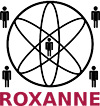Blogs
Read more about different aspects and implications of this project
ROXANNE platform & network analysis
—
by Garg, Shivam
—
last modified
Nov 05, 2021 03:05 PM
Maximizing the speed of investigations is one of the key factors in the presence of dynamically changing and technologically savvy organized criminals. A number of automated network analysis methods were developed in the past that can be borrowed to help investigators to identify key players, paths and relations within the resulting networks in order to analyse the development of the network, find effective strategies toward its destabilisation or disruption and overall to increase investigation effectiveness.
Combination of Speech and Text Technologies with Criminal Network Analysis: Steps Toward First Field-Test Event of ROXANNE Project
—
by Garg, Shivam
—
last modified
Nov 05, 2021 03:06 PM
For law enforcement agencies (LEAs) to keep up in this new environment, they must change their approach to criminal investigations as relying mainly on physical evidence and witness statements is no longer sufficient in many cases. Training in research-based investigative procedures and access to related tools and resources can help law enforcement officers carry out successful investigations. It can help LEAs solve cases more swiftly and even prevent crimes in some cases.
Web based Training (WbT) for the engagement of technology providers and LEAs through EU Funded Projects
—
by Garg, Shivam
—
last modified
Apr 06, 2020 09:00 AM
A combination of “synchronous” and “asynchronous” modes can be adopted for WbT instructions. This blog discusses various possibilities around the same.
Artificial Intelligence Adoption in Law enforcement
—
by Garg, Shivam
—
last modified
Apr 28, 2021 09:10 AM
The ROXANNE project has a principal objective to enhance the LEAs’ efforts to discover criminal networks and identify their members. It has capitalised on certain aspects of AI technologies. Speech and language technologies (SLTs), visual analysis (VA) and network analysis (NA) will become the basis of ROXANNE platform, which will enhance criminal network analysis capabilities by providing a framework for extracting evidence and actionable intelligence.
A Generic and Flexible Platform for ROXANNE Systems Development
—
by Garg, Shivam
—
last modified
Jan 15, 2020 07:14 AM
Airbus has designed its Multi-source and Multi-media analysis solution through the Concept of Generic Architecture which enables the regrouping of multimedia processing software products and presenting them in different possible configurations, based on one common and generic architecture.
Dissemination & Exploitation Aspects of ROXANNE
—
by Garg, Shivam
—
last modified
Jan 06, 2020 12:32 PM
This blog discusses various aspects of communication, exploitation and dissemination related to this project.
Analysis of streaming data for security by ITML
—
by Garg, Shivam
—
last modified
Dec 19, 2019 10:56 AM
Project kick-off meeting
—
by admin
—
last modified
Nov 13, 2019 08:46 AM
The project kick-off meeting was held at Idiap Research Institute, in Martigny Switzerland, on 3-4 September 2019.
Document Actions








